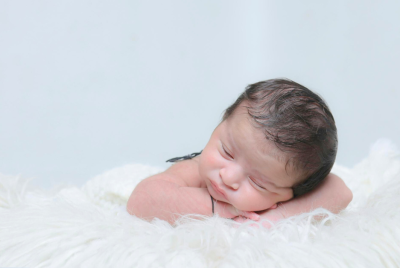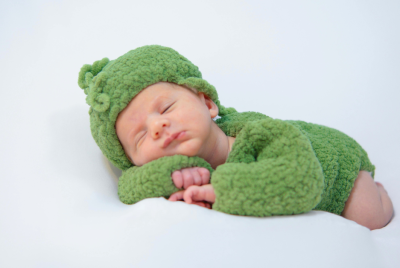Why Your Baby Only Sleeps When Held: Unlocking Independent Sleep Habits
Have you ever faced the challenge of your Baby Only Sleeps When Held? I understand the struggle, and in this article, I’ll share my personal experience along with helpful suggestions, reviews, and ratings to guide you through this common parenting issue.
From creating a soothing environment to exploring the right products, I’ve got you covered. Let’s dive into practical tips for helping your baby sleep independently.
My Personal Experience: Why Baby Only Sleeps When Held
The enchanting yet demanding realm of parenting became more apparent when my arms transformed into the primary sanctuary for my baby’s slumber. While the closeness was undeniably heartwarming, a practical concern emerged – how could I ensure rest for both my baby and myself without constant holding? This realization spurred a quest for solutions, propelling me into an exploration of tips, products, and techniques that could liberate both parent and baby from the confines of perpetual physical contact.
As we delve further, let’s uncover the layers of this issue and unveil effective strategies for a more restful and independent sleep experience.
Understanding the Issue: Why Baby Only Sleeps When Held
The challenge of a baby who exclusively seeks sleep while cradled goes beyond a mere preference. It often manifests as a habitual reliance that can disrupt both the baby’s sleep patterns and the parents’ ability to find moments of respite. To unravel this puzzle, understanding the underlying dynamics is crucial. Factors such as separation anxiety, the association between being held and falling asleep, and the inherent need for comfort play pivotal roles in shaping this pattern.
Understanding the specific sleep patterns and parameters explored in the polysomnography study on healthy newborns is integral when addressing the challenge of babies exclusively seeking sleep when held, as it provides a comprehensive foundation for tailoring strategies to unlock independent sleep habits in this age group.
As we embark on the journey of unraveling this intricate issue, we’ll explore practical strategies that go beyond conventional advice to address the root causes. Continue reading to discover actionable insights that can transform your baby’s sleep routine.
Would you like to delve into strategies for helping your baby sleep independently?
Tips for Helping Baby Sleep Independently

Creating a Soothing Environment:
Immerse your baby in a serene sleep environment by experimenting with various elements. Soft lighting, gentle music, and a consistent room temperature can create an ambiance that induces relaxation. It’s essential to observe your baby’s responses to different stimuli, tailoring the environment to their unique preferences.
Establishing a Consistent Routine:
Routine becomes a beacon of predictability for your baby. Craft a bedtime ritual that includes calming activities, such as a warm bath or a soothing story. Consistency in these rituals signals to your baby that it’s time for rest, fostering a sense of security that transcends the need for constant physical contact.
Gradual Transition Techniques:
Transitioning your baby to independent sleep is a delicate process that requires patience. Begin by introducing short intervals of solo crib time during the day, gradually extending to nighttime. This incremental approach allows your baby to acclimate to the idea of sleeping without constant physical reassurance.
Product Recommendations: Why Baby Only Sleeps When Held
In your pursuit of fostering independent sleep habits, incorporating effective products can be a game-changer. Consider these active counterparts to your strategies:
Swaddles and Sleep Sacks:
Explore swaddle techniques and products with high user ratings to provide a snug and secure feeling for your baby. Swaddling can mimic the comfort of being held, offering a sense of security that aids in the transition to independent sleep.
White Noise Machines:
Investigate white noise machines with adjustable settings and positive reviews. These machines create a consistent background sound that masks disturbances, contributing to a serene sleep environment for your little one.
Comfortable Sleep Surfaces:
Delve into reviews of cribs, mattresses, and bedding materials to find options prioritizing both comfort and safety. Choosing an appropriate sleep surface complements your efforts in creating an ideal sleep environment.
As we seamlessly integrate products into our strategy, understanding the reasons behind the challenge becomes paramount. Let’s explore the intricacies and contribute to a comprehensive approach.
Unveiling the Reasons Behind the Challenge: A Deeper Dive
Understanding why a baby clings to constant physical closeness during sleep involves recognizing emotional needs and developmental stages. Separation anxiety, the association between being held and falling asleep, and the fundamental necessity of feeling close to a caregiver all play crucial roles in shaping this unique sleep pattern.
Conclusion: Why Baby Only Sleeps When Held
Navigating the intricate landscape of a baby who exclusively seeks sleep when held demands a comprehensive strategy. Patience, experimentation, and a profound understanding of your little one’s needs are the cornerstones of success. By creating a soothing environment, establishing a consistent routine, exploring effective products, and understanding the reasons behind the challenge, you pave the way for a gradual and successful transition to independent sleep.
Now, as we wrap up our exploration, let’s address some common questions that may arise on this journey. These FAQs aim to provide additional clarity and guidance for parents navigating this challenging but rewarding aspect of parenting. Ready to unravel some common queries?
FAQs
1. How long does it take for a baby to adjust to independent sleep?
Adjusting to independent sleep varies for each baby. It’s a gradual process; some may adapt quickly, while others may take more time. Consistency in your approach is key.
2. Are there specific products that work better for certain age groups?
Yes, certain products like swaddles and sleep sacks may be more suitable for younger infants, while older babies might benefit from transitional sleep solutions. Always consider your baby’s developmental stage when choosing products.
3. Should I avoid picking up my baby when they cry during the night?
Responding to your baby’s cries is essential for their emotional well-being. However, gradually introducing moments of self-soothing can contribute to independent sleep. Striking a balance is key.
4. What role does room temperature play in promoting better sleep for babies?
Maintaining a comfortable room temperature is crucial. Babies may sleep better in a cooler room, typically around 68-72°F (20-22°C). Monitor your baby for signs of overheating or being too cold.
5. Can I use a combination of different techniques to help my baby sleep independently?
Absolutely! Every baby is unique, so combining various techniques, such as creating a soothing environment, establishing a routine, and incorporating suitable products, can be a personalized and effective approach.
As you embark on this journey towards independent sleep, remember that there’s no one-size-fits-all solution. Adapt and refine your strategies based on your baby’s responses and developmental milestones. May your nights become more peaceful, and your baby’s sleep more restful.
*We may earn a commission from purchases made through our links, at no cost to you. This does not affect our product recommendations. Please see our disclosure to learn more.




